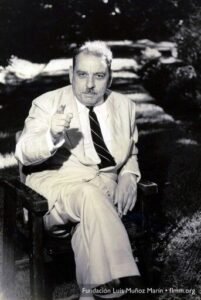
The Jeep Grand Cherokee has long been a staple in the mid-size SUV market, renowned for its blend of off-road capability and on-road comfort. The 2025 model aims to continue this legacy, offering a range of trims and features to appeal to a broad spectrum of buyers. Let's delve into what makes the 2025 Grand Cherokee tick.
What's New for 2025?
The 2025 Jeep Grand Cherokee doesn't introduce a complete overhaul, but rather refines the existing WL generation. Key updates and carryovers include:
- Carryover Design: The exterior and interior design largely mirror the 2024 model. This means you'll find the same sleek lines, signature seven-slot grille, and a modern, well-appointed cabin.
- Trim Levels: The Grand Cherokee continues to offer a wide array of trim levels, from the base Laredo to the luxurious Summit Reserve. This extensive lineup allows buyers to choose a model that fits their specific needs and budget.
- Powertrain Options: The standard engine remains the 3.6-liter V6, providing a balance of power and efficiency. The plug-in hybrid 4xe variant is also available, offering a more fuel-efficient and performance-oriented option.
- Technology: The Grand Cherokee boasts a user-friendly infotainment system with a large touchscreen display. Available features include wireless Apple CarPlay and Android Auto, premium sound systems (like McIntosh), and advanced driver-assistance systems (ADAS).
A Look at the Trims
The 2025 Grand Cherokee offers a wide range of trims, each with its own set of features:
- Laredo: The base trim offers essential features like a power driver's seat, dual-zone automatic climate control, and an 8.4-inch infotainment screen.
- Altitude: This trim adds a touch of sportiness with blacked-out exterior accents and leatherette upholstery.
- Limited: A step up in luxury, the Limited offers leather upholstery, heated front and rear seats, and a power liftgate.
- Overland: Designed for off-road enthusiasts, the Overland trim includes features like an adaptive air suspension and a two-speed transfer case.
- Summit: The Summit trim elevates the Grand Cherokee to near-luxury status with premium leather upholstery, massaging front seats, and advanced technology features.
- Summit Reserve: The top-of-the-line trim, the Summit Reserve, offers the ultimate in luxury and refinement with the best materials.
Performance and Capability
The 2025 Grand Cherokee offers a comfortable on-road experience with composed handling. The standard 3.6-liter V6 engine provides adequate power for most driving situations. For those seeking more performance and efficiency, the 4xe plug-in hybrid is an excellent choice.
Jeep has always been synonymous with off-road capability, and the Grand Cherokee lives up to this reputation. Available features like the Quadra-Drive II four-wheel-drive system, adaptive air suspension, and electronic limited-slip differential make it a capable companion on various terrains.

Interior Comfort and Technology
The Grand Cherokee's interior is a highlight, offering a modern design and a comfortable cabin. Depending on the trim level, you can find a range of materials, from cloth to premium leather. The seats are generally comfortable and supportive, making long drives enjoyable.
The Grand Cherokee is equipped with a user-friendly infotainment system. Higher trims offer a large touchscreen display, wireless smartphone integration, and a premium sound system. Available technology features include a digital rearview mirror, a head-up display, and a suite of advanced driver-assistance systems.
Pros and Cons
Here's a quick rundown of the pros and cons of the 2025 Jeep Grand Cherokee:
Pros:
- Wide range of trim levels
- Capable off-road performance
- Comfortable on-road ride
- Modern and well-appointed interior
- Available plug-in hybrid powertrain
Cons:
- V6 engine could be more refined
- Higher trims can get expensive
- Fuel economy could be better (for the V6)
- Some competitors offer more cargo space
Final Verdict
The 2025 Jeep Grand Cherokee is a compelling choice for buyers seeking a versatile mid-size SUV. It excels in combining off-road capability with on-road comfort, and its wide range of trim levels ensures there's a Grand Cherokee for almost everyone. While the V6 engine may not be the most exciting, and the higher trims can be pricey, the Grand Cherokee's overall package is hard to beat. If you prioritize a comfortable ride, a modern interior, and the ability to tackle various terrains, the 2025 Grand Cherokee is worth considering.
https://youtu.be/ecX_WkHuNIY?si=dMIqFUulpCKlqpOZ




 Hipodromo Camarero[/caption]
Hipodromo Camarero[/caption]
